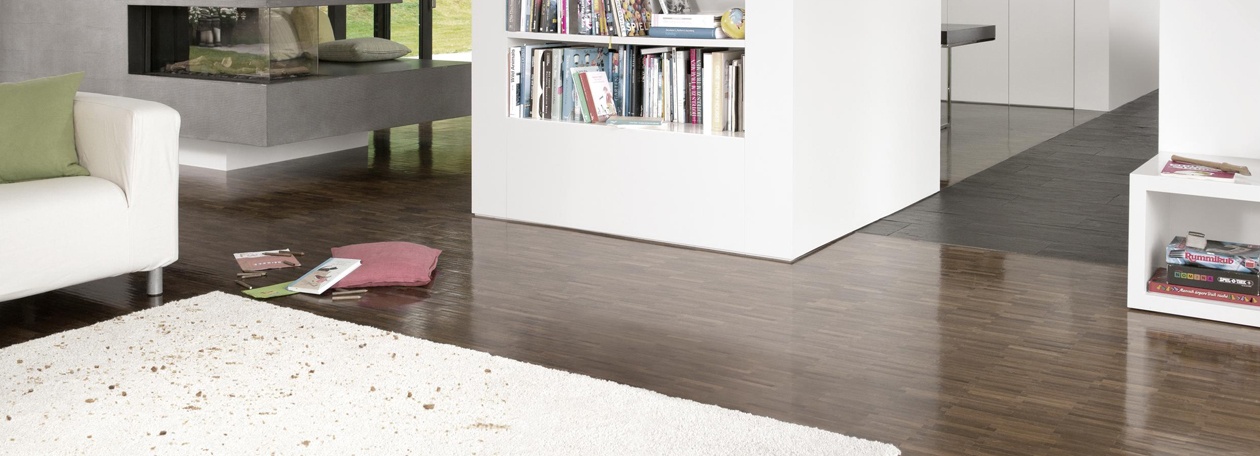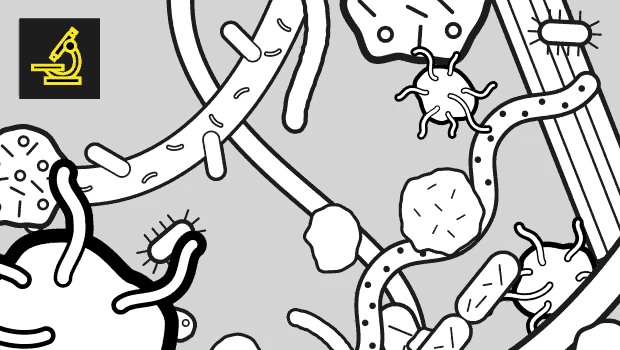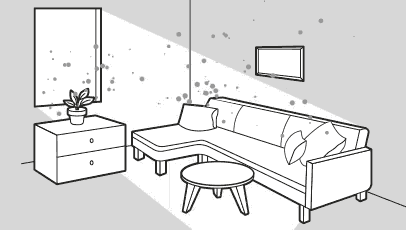On the Hunt for Dirt
What is dust actually made of? What exactly is the difference between cleaning and tidying up? And what’s the most effective way to clean your home? We take a closer look and uncover the secrets of a squeaky-clean apartment.

The dust has really piled on
It’s something we’re all too familiar with: The house is radiant after a recent cleaning, from the attic down to the basement. You keep the windows and the doors closed after airing out the rooms. Yet, just a short time later, a fine layer of dust settles on the furniture, on the plants and on the floor. Unfortunately, mopping, sweeping and vacuuming only provide temporary respite since dust will invariably be stirred up wherever people live. But where does dust come from anyway and what’s it made of?
Zooming in using an electron microscope provides us with some answers. Dust is a ‘diverse mix’ of particles with various sizes that collect and bind together. It’s all there, from dead skin cells and carpet fibres, to pollen and pet hair, to fine particulate matter — an ‘inviting feast’ for unwanted guests such as booklice, dust mites, bacteria and mould spores. Depending on the size of the particles and their weight, dust is either carried to every corner of the house with the circulating air or it permanently drifts through the rooms without settling.
The composition of house dust differs depending on the room, the location of the dwelling as well as the number of inhabitants and their way of living. We carry a large portion of this dirt into the house with us on our shoes. And that’s why grates, coconut or textile mats and rubber profiles serve as effective ‘dirt collecting zones’. When placed at entrances, they catch a good amount of the grime which would otherwise end up in the entry hall or in other living areas. Airing out a living space brings in additional soot, fungal spores and pollen.

Types of dirt
In very general terms, dirt can be divided into three types:
- Coarse dirt, such a paper remnants and autumn leaves
- Fine dirt, such as sand, dust and soil
- Fluid dirt, such as water, oil and solutions
Moreover, dirt can contain various contaminating characteristics:
- It is found loose on the ground, such as sand or dust
- It is fixed to a surface, such as adhesive residue, protein and fat
- It causes mechanical damage to a surface, such as sand and pebbles
- It contains micro-organisms, such as bacteria, viruses or fungus
Don’t only clean up but also maintain
Anyone tackling dirt and impurities cannot avoid the task of ‘cleaning up’. Cleaning is defined as ‘making something free of unwanted foreign substances which are situated on a surface’. Every cleaning process aims to get rid of dirt and impurities by using the most efficient cleaning method possible. In the household, this includes sweeping, vacuuming, scrubbing, and using a dry or a wet mop.
Just like dirt, cleanliness can be divided into various types:
- Visually clean — the naked eye does not see any more dirt on the surface
- Bacteriologically clean — a surface is free of living micro-organisms
- Physically clean — there is no dirt visible on a surface, even when using a magnifying glass or a microscope
- Chemically clean — a surface is free of oxygen compounds and chemical substances
And just why do we invest so much time and effort — an average of 3.17 hours per week in Germany, as evidenced by an international study on cleaning by Kärcher — into thoroughly cleaning our living spaces? We not only believe that a clean home is important, but we also aim at value preservation, meaning that we want to take care of our property. Other factors such as aesthetics, safety and image also move us to reaching for the vacuum cleaner, steam cleaner, electric broom and the like.
Interview with Martin Lutz
In an interview, Martin Lutz, Managing Director of the Research and Testing Institute for Facility Management GmbH reveals where the greatest obstacles to cleanliness are hidden in our own homes.
Mr Lutz, how do you define dirt?
I always describe dirt as ‘material in the wrong place’ and refer to the following example: Marmalade on a piece is buttered bread is material in the correct place, whereas marmalade on the floor is material in the wrong place. Whether or not an environment is considered dirty always also depends on one’s subjective feeling, especially in private settings. This makes it difficult to give a general definition of dirt.
Are there any typical types of dirt that one finds in every living space?
Loose fine dirt can be found in every house, which primarily consists of dust, lint and hair.
What’s the most effective way to get rid of such loose fine dirt?
First, we have to clearly distinguish between tidying up and cleaning. When cleaning, you consciously know what you are doing and specifically select a cleaning method based on the type of dirt at hand. When you tidy up, you’re only making an area clean ‘to the eyes’. One good example is dusting. In this case, many people will instinctively reach for a damp rag. However, it is much for effective to get rid of household dust by using a dry microfibre cloth or a duster since these take advantage of the electrostatic properties of the cleaning textiles and do a much better job at bonding to dust. So, you should always ask yourself: ‘Am I tidying up or am I cleaning?’
How has the dirt found in our homes changed over time?
In the past, dirt often originated from inside the home, such as soot particles emitted by an oven or an open fire. Today, we tend to carry much more dirt into our houses and apartments from the outside.
Environmental factors have, of course, also changed the composition of dirt. One of the big differences likewise has to do with the types of surface materials that we use. Earlier, surfaces were often ‘cleaned until worn out’. For example, floors would get resurfaced with a layer of wax, which you will often see on older parquet floors.
Today, the original condition of a surface is supposed to last as long as possible. Preserving value by applying targeted cleaning combined with maintenance has become much more important for people. A lot has also changed when you look at the assortment of cleaning products. The market has become oversaturated with products bearing imaginary names that give little clue as to what they were actually developed for. It seems that the good, old-fashioned all-purpose cleaner has become obsolete...

Which rooms contain the most dirt?
As I mentioned before, dirt is a very subjective matter. When we talk about dust, experience has shown that the entry hall is the dirtiest area of the house since we bring a lot of ‘filth’ in with us on our shoes. That’s why every entrance should be equipped with a floor mat.
But there are also types of dirt that are hygienically unsafe, such as when a surface is contaminated with living micro-organisms. In many homes, the handle of the refrigerator is often dirtier than the toilet seat. People go to buy groceries, touch objects like the bar of the shopping cart, come home and immediately put the products in the fridge without washing their hands. All areas and objects which are subject to frequent skin or hand contact should be cleaned regularly. This includes door handles in our homes and the car as well as devices with touch displays such as smart phones and tablets.
What cleaning trends do you expect will soon make their way into our homes?
Cleaning will always adapt itself to the surfaces, not the other way around. Our living spaces should not only remain clean, but they should maintain their original condition for as long as possible as well — preserving value by using effective cleaning methods and care products will continue to play an important role.
One thing that is also becoming more important for consumers is minimising the use of chemicals, be it through environmentally safe products or through improved devices that remove dirt while protecting the surface. There is one thing that I can ‘predict’: Complete, 100-per cent cleanliness and self-cleaning surfaces still remain pipe dreams.
Cleaning checklist
Effective cleaning means selecting the correct cleaning methods in combination with suitable cleaning products — our checklist is meant to help you take a targeted approach the next time you clean your home. Ask yourself the following questions before you start cleaning:

What type of dirt is present?
Am I dealing with water-soluble impurities such as street dirt or oily/fatty impurities from foods?
What kind of surfaces need to be cleaned?
- What surface materials are the objects in need of cleaning made of? Are they sensitive to any particular products?
- Which accessories (such as brushes/rags) are suitable for use with this surface?
- How large is the object/area in need of cleaning?
- Is the surface flat, rough or porous?

